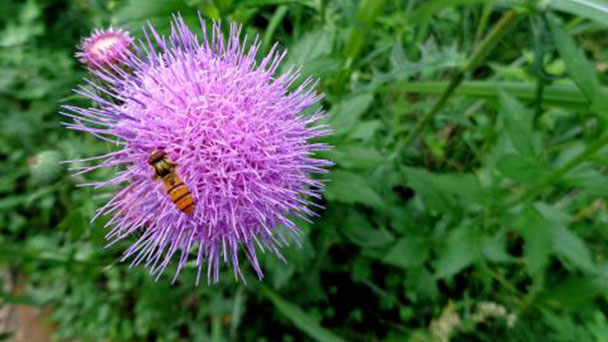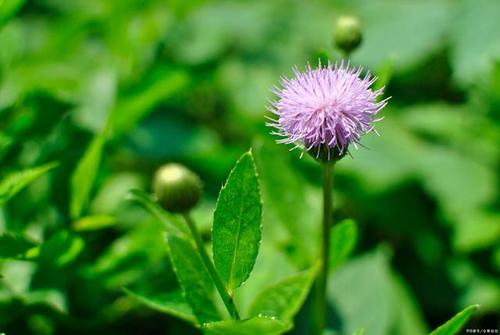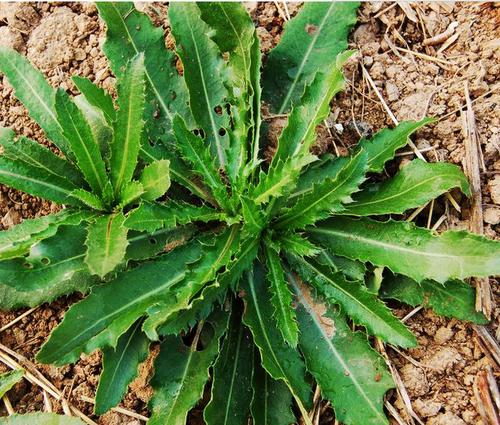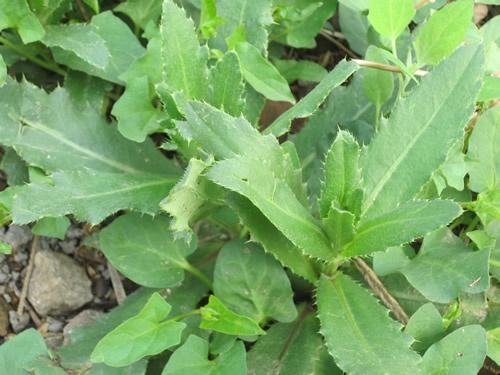How to care for Creeping Thistle
Written by Maggie
Dec 22 2020

Creeping Thistle is a very common plant, belongs to the herb. Creeping Thistle has bleeding blood detumescence to toxicity, good efficacy. Originally cephalopods existed in rural areas everywhere, but as the Creeping Thistle nutritional value was found, no restraint picking wild varieties. How to care for Creeping Thistle? Below are some caring tips for growing Creeping Thistles.

Choose the land and prepare for Creeping Thistle
Creeping Thistle adaptability is strong, given a certain amount of time, it can reproduce in the soil in the most rapid growth. However, the purpose of artificial cultivation is high yield and good quality, so when selecting soil, it should ensure that the soil is fertile, full of water, strong air permeability and free from diseases in history. After the selection of the land to do a good job in land consolidation, the land for cultivation disinfection, reduce the bacteria in the soil, reduce the occurrence of diseases in the planting process.P ay attention to the PH of the soil. Creeping Thistles grow well in acidic soil. If the PH of the soil is not appropriate, the PH of the soil should be appropriately neutralized.
Plant Creeping Thistle at the right time
Most of the growing methods are seed breeding, usually in the middle of June each year, Creeping Thistle buds begin to wither. Then we pick the withered buds off and dry them to remove the moisture, just like seeds. According to the Creeping Thistle plant size, plant spacing is about 20 * 20 cm. Before sowing seeds to do a good job of sowing seeds, after sowing seeds in the soil cover. After sowing, seeds should not be invisible. After sowing, there should be enough root water to ensure that the soil is moist and promote the germination of seeds.

Site management for Creeping Thistle
After the germination of seeds, it should be a timely inspection of seedlings, and then immediately replanted to ensure the yield. The number of seedlings per hole should not exceed 4, otherwise it will affect the growth of Acanthopanax. In the process of growth, observe Creeping Thistle growth and soil condition, apply timely watering and fertilizer. In addition, pull out the weeds in the field in time. Although Creeping Thistle has a strong growth capacity, weeds also rob pruning of nutrients, resulting in nutrient deficiency and growth retardation. Topdressing can use farm manure, but must be fully decomposed, otherwise too much heat will burn the root system.
Disease control of Creeping Thistle
All plants have a disease, of course, Creeping Thistle, too. Creeping Thistle main diseases are rust and resistant. These diseases will damage the leaves of prunus amygdala, resulting in the decline of photosynthetic capacity, unable to carry out photosynthesis, insufficient accumulation of photosynthetic matter, and affecting the quality. So when we are growing Creeping Thistles, we must do a good job of preventing disinfection. The thorn garden should be disinfected regularly, and all kinds of severe weather measures should be taken. Field management should be strengthened to ensure that the thorns have a normal growing environment.

Latest Updated
- Benefits of Bugleweed - 7 Science-backed Health Benefits
- Bugleweed Dangers & Side Effects - Is It Poisonous?
- How to Plant Evergreen Trees - What You Should Know
- When to Plant Evergreens - Grow Guide for Evergreen Trees
- 12 Wonderful Evergreen Shrubs for Your Garden
- 12 Popular Evergreen Plants with Pictures for Beginners
- When And How To Prune A Lilac Bush Like a Pro
- How to Grow & Care for Lilac Vine (Hardenbergia Violacea)
- Japanese Lilac Tree (Syringa Reticulata) Care & Propagation Guide
- Shumard Oak Pros and Cons - What to Know
Popular Articles
- Winter maintenance of Antirrhinum Majus
- How to Grow Terminalia Mantaly Tree
- How to Grow and Care for Crossostephium Chinense
- How to grow Antirrhinum Majus in spring
- Peristeria Elata (Dove Orchid) Profile: Info & Care Guide
- Underwatered Snake Plant (Sansevieria Trifasciata) - Signs And How To Fix
- How to Care for Brazilian Jasmine Plant (Mandevilla Sanderi)
- How to Grow & Care for Graptopetalum Purple Delight in Summer
- Rosa Chinensis (China Rose): Plant Growing & Care Tips
- How to Care for Baby Sun Rose (Aptenia Cordifolia)